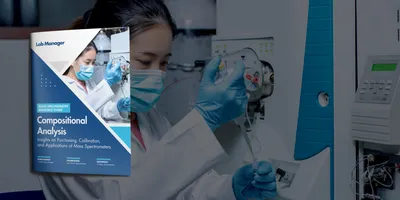 Dr. David Gangitano is an associate professor in the Department of Forensic Science at Sam Houston State University.Photo Courtesy of: Harriet McHale/SHSU
Dr. David Gangitano is an associate professor in the Department of Forensic Science at Sam Houston State University.Photo Courtesy of: Harriet McHale/SHSU
(Huntsville, TX)—Sam Houston State University is advancing the field of forensic botany with the publication of two recent studies that use marijuana DNA to link drug supplies and pollen DNA to aid in forensic investigations.
In an article published in the International Journal of Legal Medicine, faculty and students from the Department of Forensic Science report that they developed a test to individualize samples of marijuana that could be used to link drugs across cases. The study examined 11 cases containing a total of 199 samples from U.S. Customs and Border Protection, which included four matching genotypes indicating drugs came from the same source.
Related Article: Tying Lipstick Smears From Crime Scenes to Specific Brands (Video)
"The use of a DNA-based method for identification will allow federal law enforcement agencies (e.g., U.S. Customs and Border Protection (CBP) and Drug Enforcement Administration (DEA)) to form links between cases involving the cross-border trafficking of Cannabis," said Dr. David Gangitano, one of the authors on the study.
In a second article published in Science and Justice, researchers found that pine pollen could provide a viable source of DNA for criminal investigations. Pine pollen remains viable for DNA testing for at least two weeks on cotton clothing and can help link a suspect or victim to a location. The study examined a new collection device, a high-throughput method for DNA extraction and amplification, and a newly-developed system for genotyping.
"This study has shown that pollen can be a stable source of forensic DNA evidence, as a proof-of-principle, and that may persist on cotton clothing for at least 14 days of wear," said Dr. Gangitano. "This method can be applied in forensic cases where pollen grains larger than 10 μm (e.g., from herbs or trees) may be transferred to clothing (worn by suspect or victim) by primary contact."
Related Article: Forensic Researchers Set Standards for X-Ray Identification of Bodies
"Evaluation of a 13-loci STR multiplex system for Cannabis sativa genetic identification," by Rachel Houston, Matthew Birck, Sheree Hughes-Stamm and David Gangitano, is available at http://link.
"Identification and persistence of Pinus pollen DNA on cotton fabrics: A forensic application," by Cassandra Schield, Cassandra Campelli, Jennifer Sycalik, Christopher Randle, Sheree Hughes-Stamm, and David Gangitano is available at http://www.scienceandjusticejournal.com/article/S1355-0306(15)00139-2/fulltext.
In addition to published research, Dr. Gangitano recently was invited as a key speaker to participate in the inaugural meeting of the First International Congress of Forensic Botany in Chile. He collaborated with the Investigative Police from the Republic of Chile on several cases involving plant evidence. In 2014, a Chilean forensic scientist was invited to Sam Houston State University to learn about molecular identification of a single grain of pollen. Dr. Gangitano also consulted on a double homicide case involving a few grains of potato pollen found on the suspect and a high profile case of an American student in Chile where the critical evidence involved an oak leaf.










